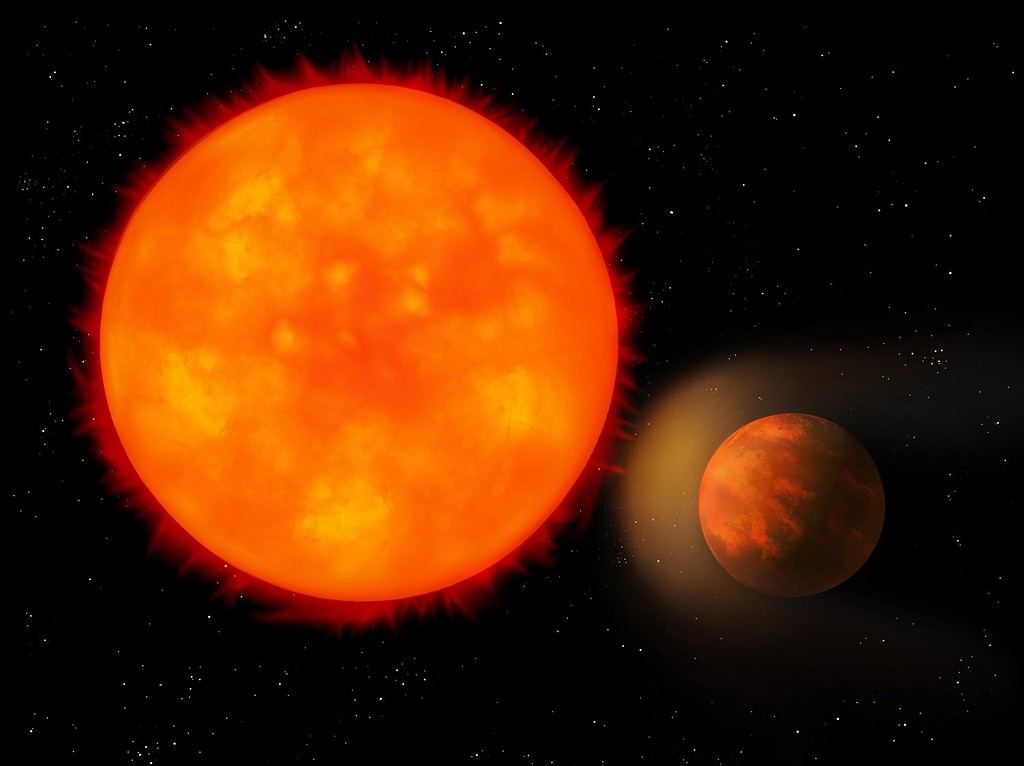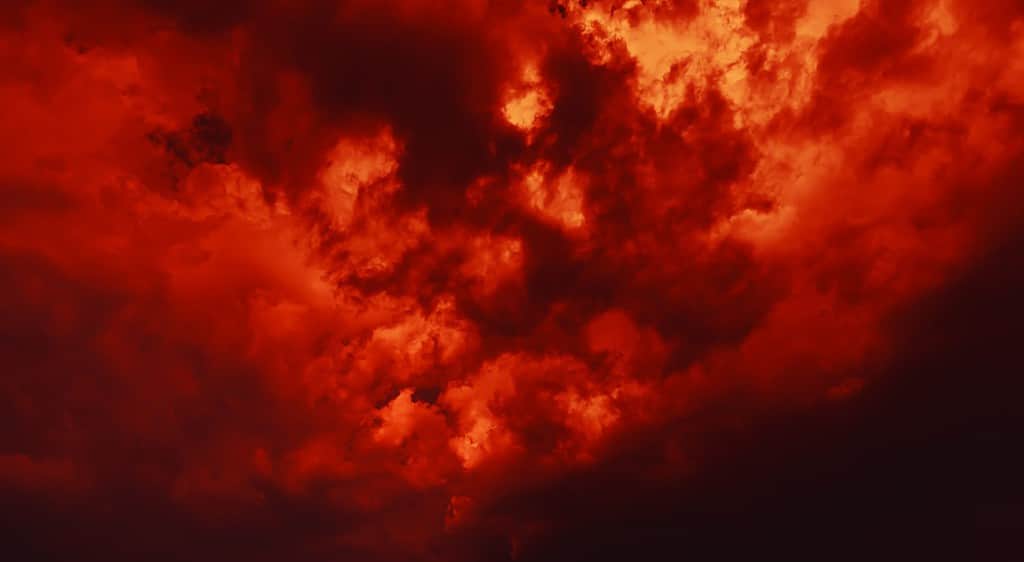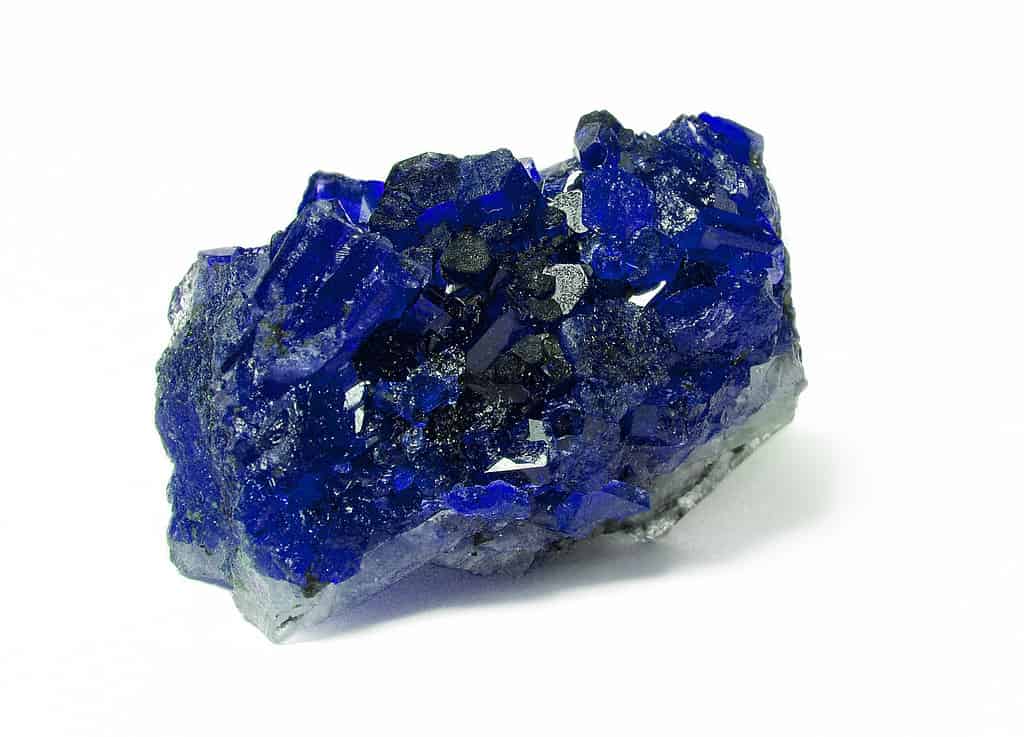Understanding the atmospheres of distant planets is not an easy task, but it’s still something that astronomers do so they can better understand the universe. In 2015, a planet was discovered that has just the right kind of atmosphere for a unique kind of precipitation. Discover why astronomers believe it rains sapphires and rubies on Hot Jupiter WASP-121B now.
What is a Hot Jupiter?

Exoplanets called Hot Jupiters orbit very close to their star.
©Nazarii_Neshcherenskyi/Shutterstock.com
Hot Jupiters are exoplanets that are gas giants like Jupiter in our solar system except they orbit their star extremely fast. To be considered a Hot Jupiter, the planet must complete its orbit around its star in less than 10 days.
Because their orbiting speed usually implies they’re very close to their star, most Hot Jupiters are tidally locked. This means that one side of the planet is always facing its star while the other faces open space. The moon orbiting Earth is tidally locked to our planet in much the same way that Hot Jupiters are tidally locked to their stars.
What Is Hot Jupiter WASP-121b?
WASP-121b is an exoplanet orbiting a star about the size of the Sun that’s approximately twice the size of the planet Jupiter in our solar system. Its mass is about 20 percent bigger as well.
Like the Jupiter in our solar system, Hot Jupiter WASP-121b rages with storms and high winds. However, the unique atmosphere and high heat of the planet may create rain made from sapphires and rubies. While this is an extremely rare occurrence on planets, WASP-121b is probably not the only place in the universe with this kind of precipitation.
Some Hot Jupiters are considered Ultra Hot Jupiters if they are believed to surpass a certain temperature threshold. These Ultra Hot Jupiters are the hottest exoplanets in existence, and WASP-121b qualifies as such a planet. To qualify as an Ulta Hot Jupiter, WASP-121b’s average atmospheric temperature exceeds 3000 degrees Fahrenheit.
Where Is Hot Jupiter WASP-121b?
Hot Jupiter WASP-121b is an exoplanet in a constellation called Puppis. It’s a little over 850 light-years away from Earth. The star it orbits is called WASP-121, and this Hot Jupiter is the only identified planet orbiting this specific star.
Hot Jupiter WASP-121b is about as close to its star as it can be without getting yanked apart and pulled into the star. This line of destruction is referred to as a Roche Limit.
Why Does It Rain Rubies and Sapphires on Hot Jupiter WASP-121b?

Metals form clouds in the atmosphere of Hot Jupiter WASP-121b.
©Drop of Light/Shutterstock.com
Because WASP-121b is so close to the star it orbits, it’s tidally locked to the star. This means that one side of the planet is constantly facing the star. As a result, the sunny side of the planet is extremely hot.
The sunny hemisphere is over 5400 degrees Fahrenheit in some spots, while the dark half of the planet is a bit over 2700 degrees Fahrenheit. The hottest part is the upper atmosphere on the sunny side due to the heat radiating from its star.
The heat in this upper atmosphere creates glowing molecules of water before breaking them down completely. Since WASP-121b orbits its star in about 30 hours, this whipping speed causes powerful winds that move these glowing and broken water molecules to the cold side of the planet.
On the cold side, the broken water molecules come back together but are pushed back into the sunny side by winds. This keeps happening so quickly that water isn’t able to precipitate on WASP-121b.
However, in its place, clouds of metals condense into big enough patches that they rain down on the cool side of the planet. These metal clouds take advantage of the loose atoms from the broken water molecules, and liquid gems are created since the atmospheric pressure on the planet is so high. As a result, sapphires and rubies may fall in liquid form as precipitation on Hot Jupiter WASP-121b.
What Are Rubies and Sapphires?

Rubies and sapphires melt at temperatures above 3700 degrees Fahrenheit.
©photo-world/Shutterstock.com
Sapphires and rubies are precious gems made from a crystalized mineral called corundum. Corundum is a gemstone made from aluminum oxide, and it’s the second strongest mineral on Earth after diamonds. The color of these gems is determined by any impurities within the stone, and precious gemstones like emeralds, rubies, and sapphires are made of corundum.
Sapphires come in a range of colors with blue being the most popular. However, other obtainable colors of sapphires include green, pink, violet, and yellow. These stones get their hues from a combination of trace metals like nickel, iron, and titanium.
Corundum crystals containing chromium become rubies. Depending on how much chromium is in the crystal determines how red these gems are. They range anywhere from light pink to a reddish-purple.
Mineral corundum melts into a liquid in temperature conditions of more than 3700 degrees Fahrenheit. This melting point is much cooler than some spots in WASP121b’s atmosphere which is why these gems fall as condensation on the exoplanet.
Thank you for reading! Have some feedback for us? Contact the AZ Animals editorial team.








